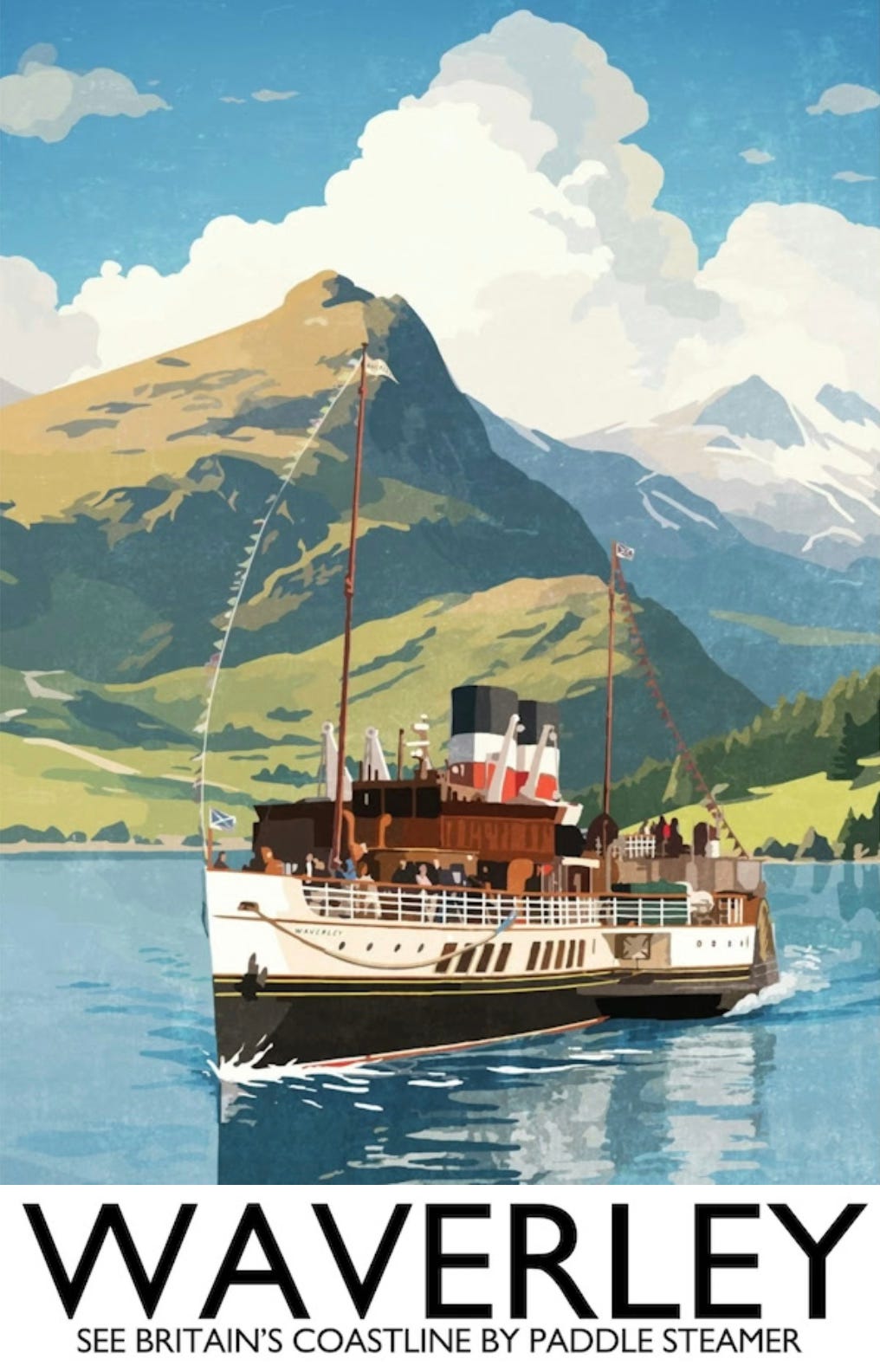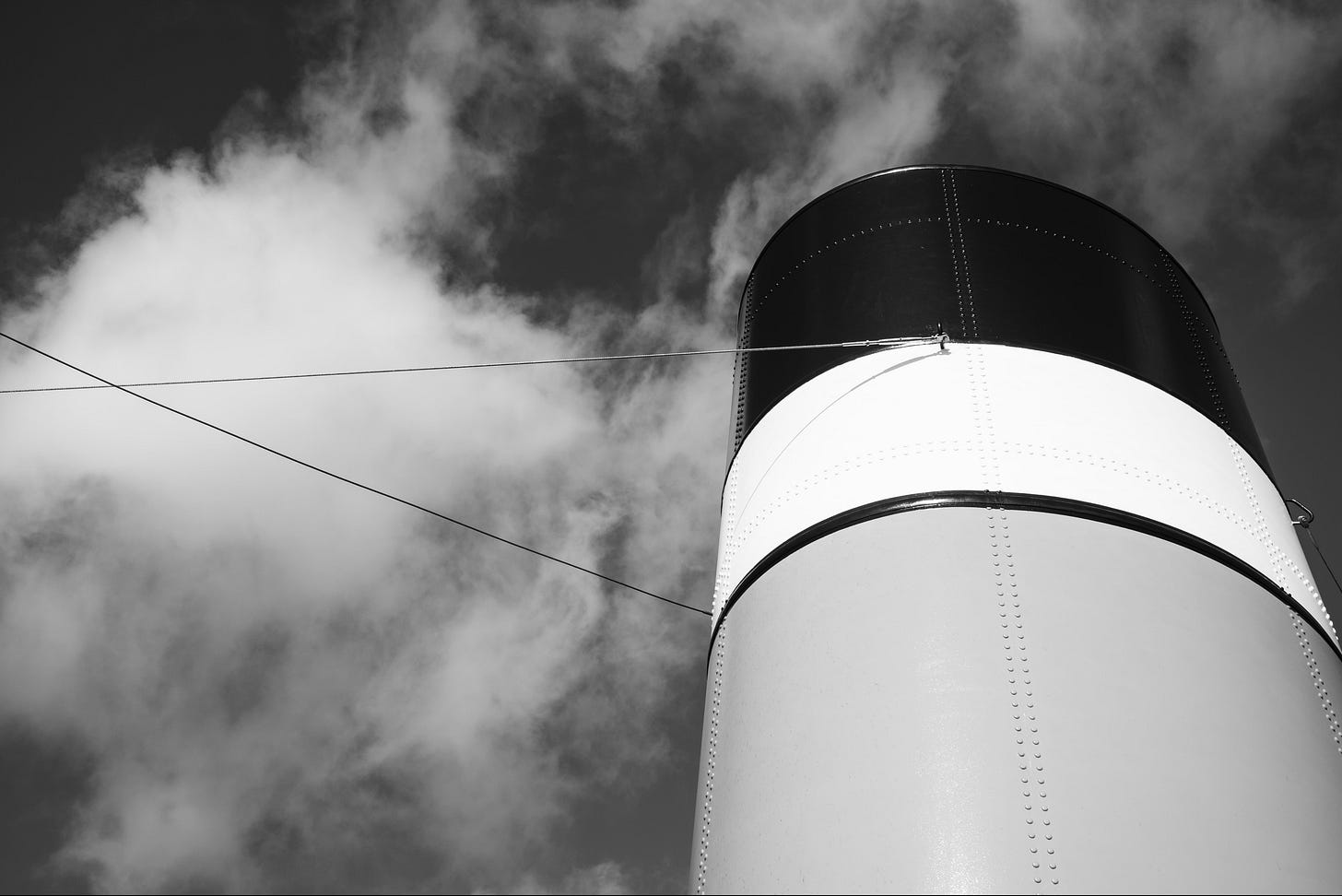All aboard the world's last sea-going paddle steamer
A photo essay, including a surprise encounter with a Trident nuclear submarine
Glaswegians call it “going doon the watter”. In the days before package holidays in Spain, working-class Scots holidayed in Victorian seaside resorts dotted along the Clyde estuary.
For a certain generation - okay, old folk like me - the names of these towns still retain a lustre of glamour: Rothesay, Dunoon, Millport, Largs.
My mother used to sing a song with a chorus that mimicked the sound of bagpipes. It went:
Durrum a doo a doo a day, durrum a doo a daddy-oh,
Durrum a doo a doo a day, the day we went tae Rothesay-oh.
A journey “doon the watter” (“down the water” in standard English) promised sunshine and fun, even if the reality turned out to be smirr and midges.
The most popular mode of transport for these holidays was the steamboat. The first on the Clyde was the PS Comet in 1812. The most famous, and the one still plying its trade today, is the PS Waverley.
The Waverley is now the world’s last sea-going paddle steamer. You will find others on rivers and lakes - such as the Maid of the Loch on Loch Lomond, currently under renovation, or the Natchez on the Mississippi - but not at sea.
Somehow, in my sixty-odd years as a Scotsman, I had never been on the Waverley. When I was wee and my family went on holiday to Butlin’s in Ayr, we went by car. So on a crisp autumn day last year I took a day cruise from Glasgow to Dunoon to do a photo essay. As ever my main interest was people. But the trip would deliver more than I expected.
Before we get to the photos, here’s some video I took of the steam engine for machine geeks.
Cool, huh?
I swear there were people on board who never left the engine room all day, watching the seafaring equivalent of Scotty from Star Trek hit things with a spanner, and monitor a pleasingly old-school array of polished brass dials.
Some facts about the Waverley:
Built: A&J Inglis shipyard, Glasgow
Launched: 1946.
Length: 239 ft 11 in
Propulsion: Diagonal triple expansion steam engine built by Rankin & Blackmore, Greenock
Capacity: 925 passengers
Maximum speed: 18.37 knots
Here is my photo essay:
Keep reading with a 7-day free trial
Subscribe to The Jaggy Thistle to keep reading this post and get 7 days of free access to the full post archives.







